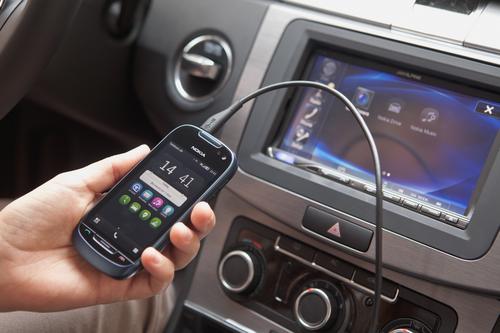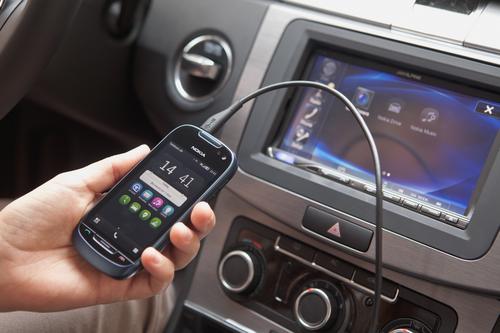Car Connectivity Standard Puts Smartphones in Driver's Seat
October 6, 2011

If you've ever tried to sync your smartphone to your car's head unit, only to find the two don't speak the same language, then the Car Connectivity Consortium (CCC) has good news for you.
The consortium, an organization that includes some of the world's biggest automakers and cellphone manufacturers, unveiled an open standard last week that's aimed at making it easier for vehicle head units and smartphones to communicate. Engineers involved in the CCC compare their standards to those that married keyboards to PCs: With the new standards, there will be less concern over incompatibility, they said.
"There are a large variety of handsets out there," Floris van de Klashorst, director of Nokia Automotive's Mobile Solutions Group, told Design News. "The new standard tries to reduce that fragmentation and create one standard way to connect to the head unit."
Known as MirrorLink, the new open standard eliminates the need for owners of multiple cars to buy separate smartphones for each of their vehicles. With it, car owners will be able to bring their phones into their vehicles and connect, not only to the center console display, but to the steering wheel knobs and buttons that control various vehicle functions. Nokia and car-auto maker Alpine Electronics are the first vendors to publicly announce products supporting MirrorLink.
Moreover, the makers of smartphone applications will have access, as well, as long as they adhere to the testing and certification specifications called for in MirrorLink. "There's a large opportunity here for the developers of applications," van de Klashorst told us.
Engineers at last week's unveiling said that MirrorLink will make it easy for developers to create applications that can be used in the car. Instead of having to develop separate applications for all of the phone manufacturers and automakers, engineers will now be able to develop one app that works in the majority of phones and vehicles.
Sixty percent of the smartphone market and 60 percent of the auto market have already joined the CCC, which includes such industry giants as Volkswagen, Toyota, General Motors (GM), Daimler, Honda, Hyundai, Delphi, Alpine, Clarion, Denso, Garmin, LG Electronics, Mitsubishi Electric, Motorola Mobility, Nokia, Panasonic, Renesas, Samsung, Sony, and many others.

Suppliers have already started developing applications based on MirrorLink. Nokia, for example, announced Nokia Car Mode, a standalone application with a user interface that simplifies access to voice-guided car navigation, traffic updates, music, and voice calls through its smartphones. Similarly, Alpine Electronics has rolled out an in-car infotainment system, called Alpine ICS-X8 App Link Station, which is also based on MirrorLink.
One advantage of the MirrorLink certification process is that it enables the auto industry to filter out applications that aren't appropriate for in-car use.
"Technologically, there is no limit, but there are driver distractions that need to be taken into account," said Mika Rytkonen, director of the CTO Office for Nokia, as well as CCC chairman and president. "There are certain responsibilities that belong to the players."
Plans are for the standards to evolve quickly. A new version of the standard, expected to be introduced later this year, will offer improvements on WiFi performance and application certification, as well as the ability to tap into some of the car's data. Soon, CCC members expect the standard to allow for access to a vehicle's CAN databus, which enables vehicle microcontrollers to communicate with one another.
"If the phone knows that the vehicle's traction control system has turned on, it might be able to alert the driver," explained Alfred Tom, investment analyst for GM Ventures. "But you have to be able to access data without harming it. In the end, the auto manufacturers will still have control over the content so that you can drive safely."
About the Author(s)
You May Also Like



